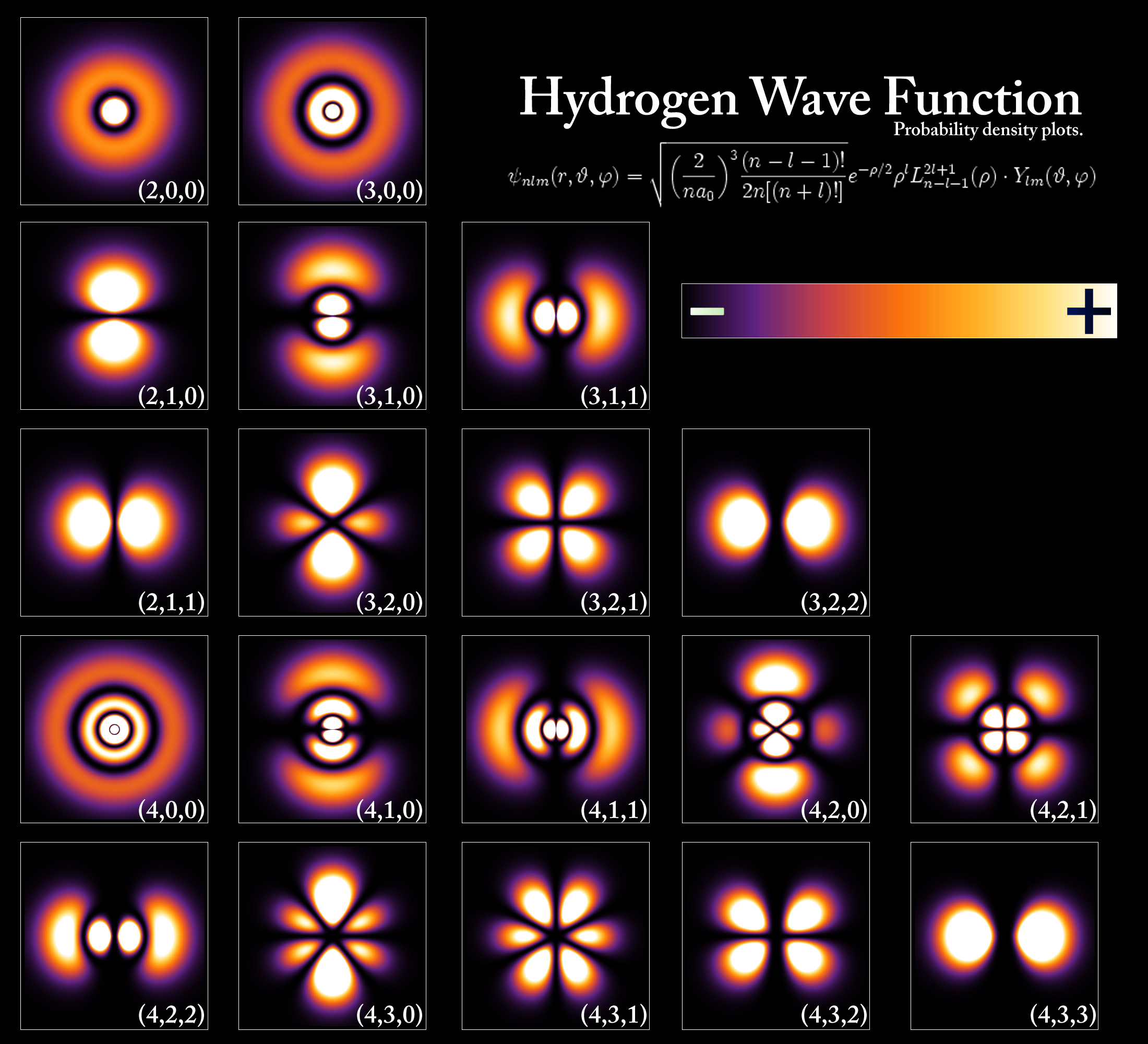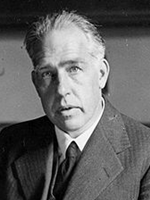Quantum mechanics was invented in the early years of the
twentieth century to explain measurements made of very simple systems involving
just a very small number of basic particles, like photons,  atoms or electrons.
It was able to make predictions of experiments that could not be explained
using Newtonian mechanics. Newtonian mechanics is the theory that explains the
macroscopic world, like how a baseball flies, or why the earth circles the sun.
atoms or electrons.
It was able to make predictions of experiments that could not be explained
using Newtonian mechanics. Newtonian mechanics is the theory that explains the
macroscopic world, like how a baseball flies, or why the earth circles the sun.
At the heart of quantum theory is the wavefunction, which encapsulates
everything that is know about the quantum mechanical system. From the
wavefunction it is possible to calculate where each particle is most likely to
be, or how fast it’s likely to be moving. These properties cannot be calculated
exactly because quantum mechanics tells us that this microscopic world is
inherently unpredictable. That is to say that the wavefunction may be prepared
in such a way that it is exactly the same each time, but the properties of the
system will have some variation in their values each time they are measured.
This naturally leads to the question of just exactly what is
the wavefunction. In the early years of quantum theory there was much debate on
this subject. This debate was largely silenced in the 1920’s when a group of
esteemed physicists, lead by Niels Bohr, came up with a way of thinking about
the wavefunction that was accepted by most physicists. They argued that the
only thing that physicists are able to do is to make measurements of the
system, and that what is happening to the system in between these measurements
is unknowable. Furthermore, the wavefunction should only be considered as a
mathematical tool to predict the results of future measurements. This viewpoint
became known as the Copenhagen Interpretation, and to date is still the
conventional view held by most physicists.
 Bohr was correct in his interpretation using the paradigms
that existed at that time. Measurements were thought to destroy the
pre-measurement wavefunction and, which was then recreated in a new form.
Indeed, that seems to be the case whenever the system a measurement is made to
maximize the precision of the measured value.
Bohr was correct in his interpretation using the paradigms
that existed at that time. Measurements were thought to destroy the
pre-measurement wavefunction and, which was then recreated in a new form.
Indeed, that seems to be the case whenever the system a measurement is made to
maximize the precision of the measured value.
In 1988 a new theory was developed that considered
measurements that were made with less precision. As you might imagine, the
strength of a measurement may be turned down, and as you get down to zero
strength the measurement is not being made at all. When a measurement is not
made, the wavefunction is not destroyed, and can propagate without changing
form. So what happens in between the extremes of a strong measurement and ‘no
measurement at all’. This is the regime that has been come to be known as ‘weak
measurement’.
With weak measurements, it’s possible to learn something
about the wavefunction without completely destroying it. As the measurement
becomes very weak, you learn very little about the wavefunction, but leave it
largely unchanged. This is the technique that we’ve used in our experiment. We
have developed a methodology for measuring the wavefunction directly, by
repeating many weak measurements on a group of systems that have been prepared
with identical wavefunctions. By repeating the measurements, the knowledge of
the wavefunction accumulates to the point where high precision can be restored.
So what does this mean? We hope that the scientific
community can now improve upon the Copenhagen Interpretation, and redefine the
wavefunction so that it is no longer just a mathematical tool, but rather
something that can be directly measured in the laboratory.
 atoms or electrons.
It was able to make predictions of experiments that could not be explained
using Newtonian mechanics. Newtonian mechanics is the theory that explains the
macroscopic world, like how a baseball flies, or why the earth circles the sun.
atoms or electrons.
It was able to make predictions of experiments that could not be explained
using Newtonian mechanics. Newtonian mechanics is the theory that explains the
macroscopic world, like how a baseball flies, or why the earth circles the sun.
 Bohr was correct in his interpretation using the paradigms
that existed at that time. Measurements were thought to destroy the
pre-measurement wavefunction and, which was then recreated in a new form.
Indeed, that seems to be the case whenever the system a measurement is made to
maximize the precision of the measured value.
Bohr was correct in his interpretation using the paradigms
that existed at that time. Measurements were thought to destroy the
pre-measurement wavefunction and, which was then recreated in a new form.
Indeed, that seems to be the case whenever the system a measurement is made to
maximize the precision of the measured value.